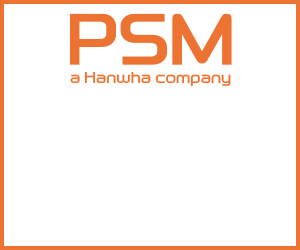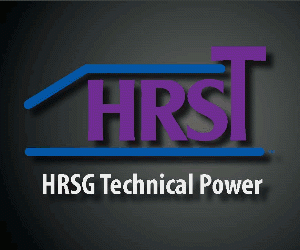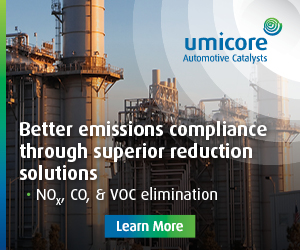This is the final part of a five-part series on the design, operation, and maintenance of reverse osmosis systems for powerplants compiled by Wes Byrne, U.S. Water’s consultant on membrane technologies. Parts I, II, III, and IV are identified below.
-
-
- Part I: Value proposition, how it works
- Part II: Importance of a pilot study in system design
- Part III: Mitigating scale formation and membrane fouling
- Part IV: System operation and monitoring
-
Chemical cleaning is a routine requirement for most RO systems. Frequency depends on the effectiveness of the pretreatment equipment.
As fouling solids or scale particles accumulate, their characteristics often change and they become more resistant to cleaning. Clay and biological materials will tend to compress against the membrane surface and become chemically resistant as water is squeezed out of their structure. Scale formations may change from being primarily calcium carbonate (relatively easy to clean) to calcium sulfate (difficult to clean).
The change in normalized RO performance variables can be used to determine cleaning needs. Most membrane manufacturers recommend cleaning before these variables change by about 15%.
Certain types of fouling solids or scaling salts may have a substantial impact on permeate quality. Aluminum salts may come out of suspension as a fouling particle, only to re-dissolve if the water acidity changes. This may then result in increased aluminum passage from the membrane surface through the membrane and into the permeate/purified water.
Calcium carbonate scale may leach a relatively high concentration of calcium carbonate through the membrane into the permeate stream and affect the conductivity. Most other fouling solids will not have a significant impact on RO salt rejection unless the fouling is extreme.
Membrane cleaning involves passing a cleaning solution through the membrane system at conditions that promote the dissolution or delamination of the fouling solids from the membrane surface or from the spacing material along the membrane flow channels. The optimum solution will depend on the particular fouling solids or scale particles, and the relative ability to clean will often be limited by membrane chemical tolerance.
Most strong oxidizing agents that would typically be effective in cleaning biological solids are not going to be compatible with the RO membrane. There will also be limits to the pH extremes that should be used. In addition, while higher temperature will increase the rate of cleaning, the solution temperature will be limited to below 105F or as designated by the membrane manufacturer.
The most critical characteristic of a cleaning solution is its pH. Acidic solutions are more effective in dissolving metals and scale formations, while alkaline (high pH) solutions are more effective in removing clay, silt, biological, and other organic solids. Strongly acidic solutions may stabilize biological solids and therefore should not be used as a first cleaning step. Finishing a cleaning with a strongly acidic solution will tend to leave the membrane with increased rejection characteristics but somewhat reduced permeate flow, while finishing with a strongly alkaline solution will have the opposite effect.
The addition of specific cleaning agents often improves the solution’s cleaning abilities. A chelating agent assists in pulling out metals from the fouling solids, while surfactants/detergents improve the solution’s ability to penetrate the fouling solids and suspend oily substances. The use of surfactants may reduce cleaning time but will increase the time required for rinse up.
When the fouling solids are causing a flow restriction, increasing normalized pressure drop, high cleaning flow rates (within the membrane manufacturer’s guidelines) through the membrane feed channels will cause agitation that will assist in breaking up the deposits. When the solids coat the membrane surface and reduce the normalized permeate flow rate, the delamination of these solids will be most easily achieved if water is not permeating through the membrane during the cleaning process and creating a force that holds the solids to the surface. This means cleaning at low pressure.
Achieving a high cleaning flow rate that is balanced throughout all of the membrane vessels usually requires that each vessel stage be cleaned separately. This also helps minimize the pressure required to push the solution through the elements. Cleaning solution is therefore pumped at high flow rates, as recommended by the membrane manufacturer. It is pumped at the maximum pressure required to achieve the target flow rate, but may be limited to 60 psi to reduce the potential for crushing or otherwise damaging the membrane elements.
The solution is directed in the normal feed-end direction of flow and the exiting concentrate stream is then returned to the cleaning tank at minimal backpressure. The flow direction may occasionally be reversed so that the solution enters the concentrate end of the stage when fouling solids are blinding the face of the lead-end membrane elements.
There may be a small flow of permeate that should also be returned to the cleaning tank using a separate line. In spite of its low apparent flow rate, the permeate should never be valved off because this may put certain membrane elements at risk of physical damage.
Data should be recorded during the cleaning process. With membrane surface fouling, it is difficult to gauge when original performance has been restored until the unit is rinsed and operated normally. If the fouling solids were causing an increased pressure drop in the RO, then the cleaning inlet pressure can be used as a measure of cleaning progress. If the pressure keeps declining, the cleaning is still removing fouling solids. If the fouling is severe, it may require a number of hours of circulation before the inlet pressure stabilizes.
Cleaning success is confirmed when the normalized pressure drop and normalized permeate flow rate return to their startup values.





